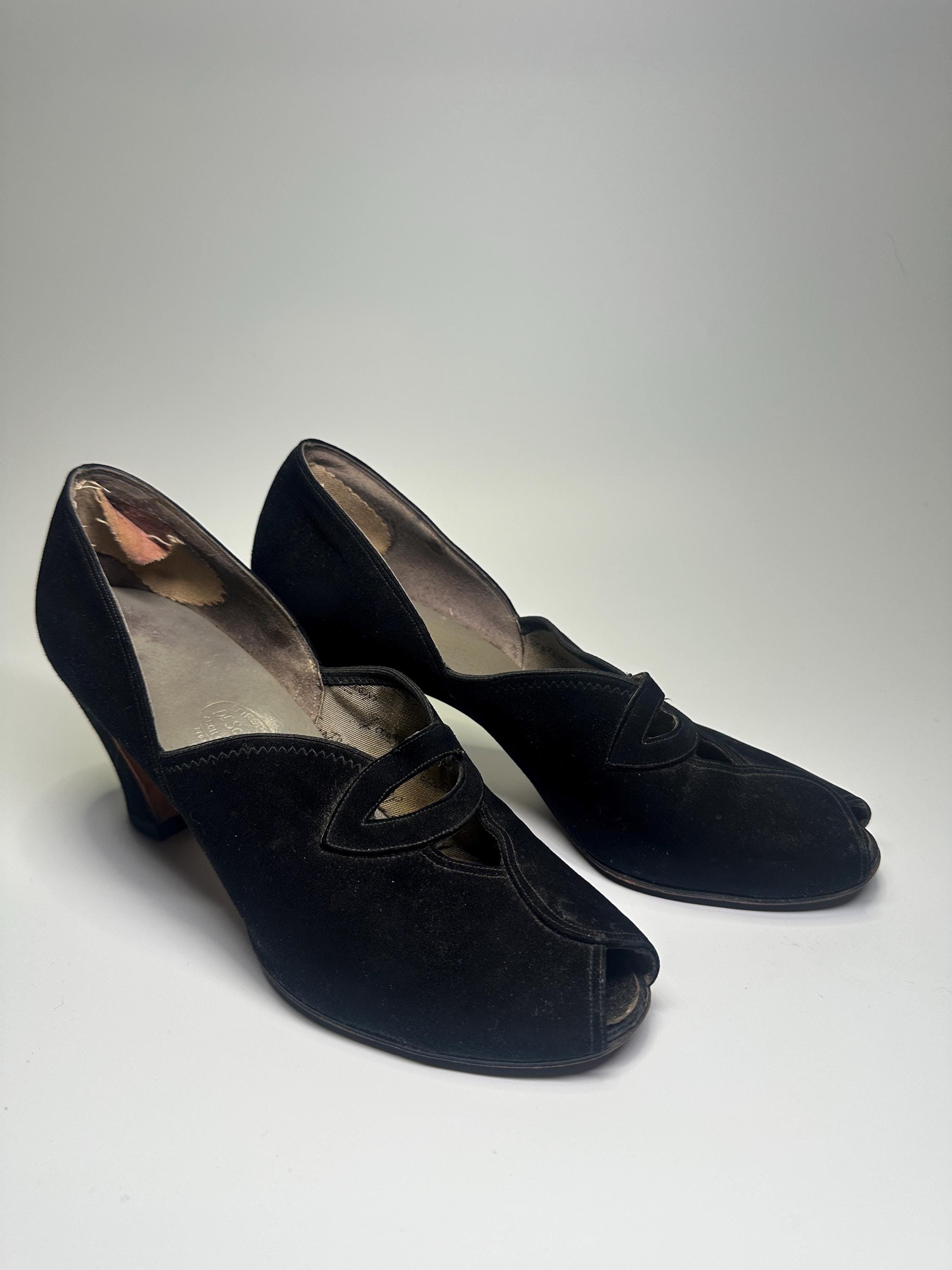 Image 1 of 8
Image 1 of 8

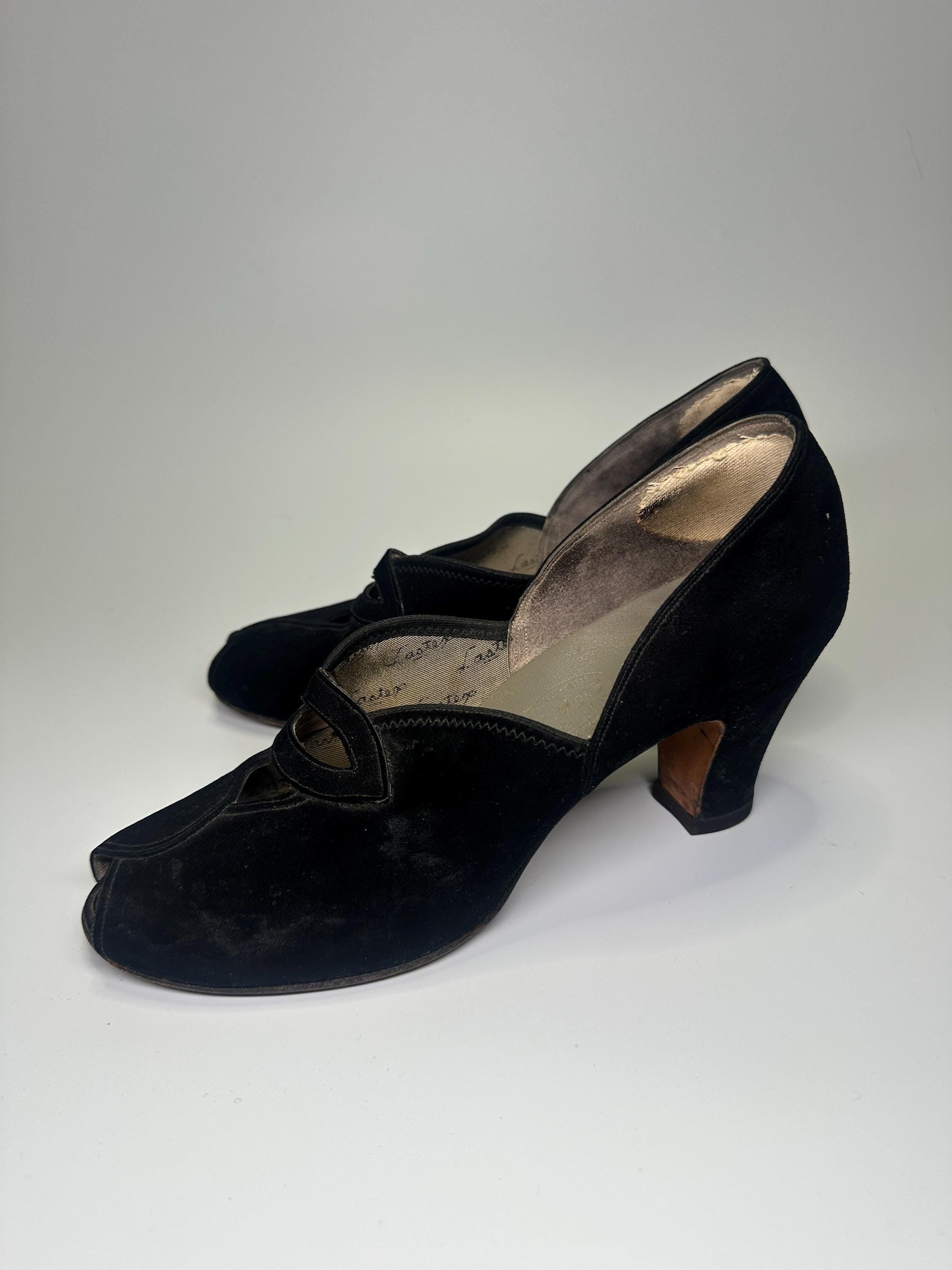 Image 2 of 8
Image 2 of 8

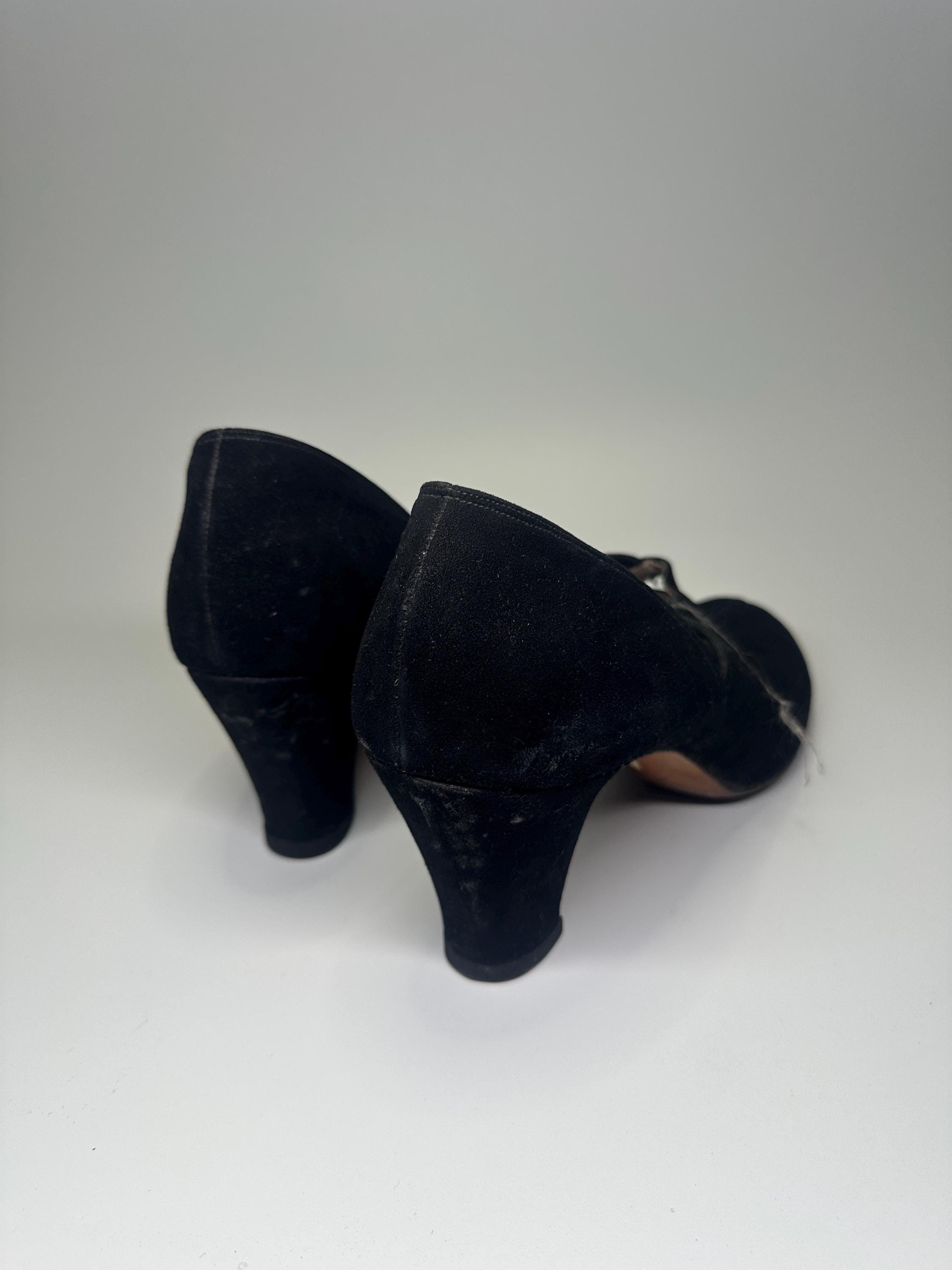 Image 3 of 8
Image 3 of 8

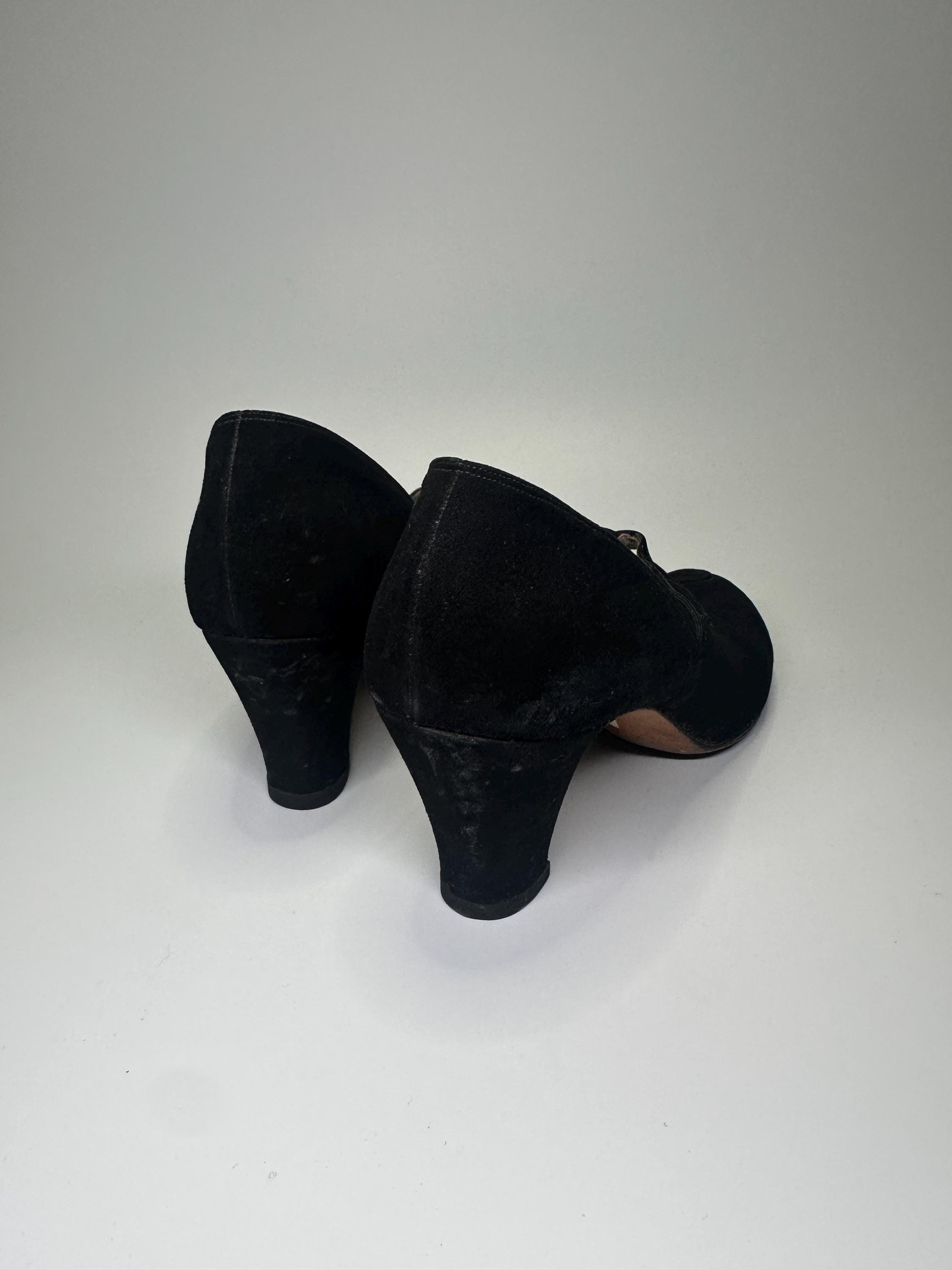 Image 4 of 8
Image 4 of 8

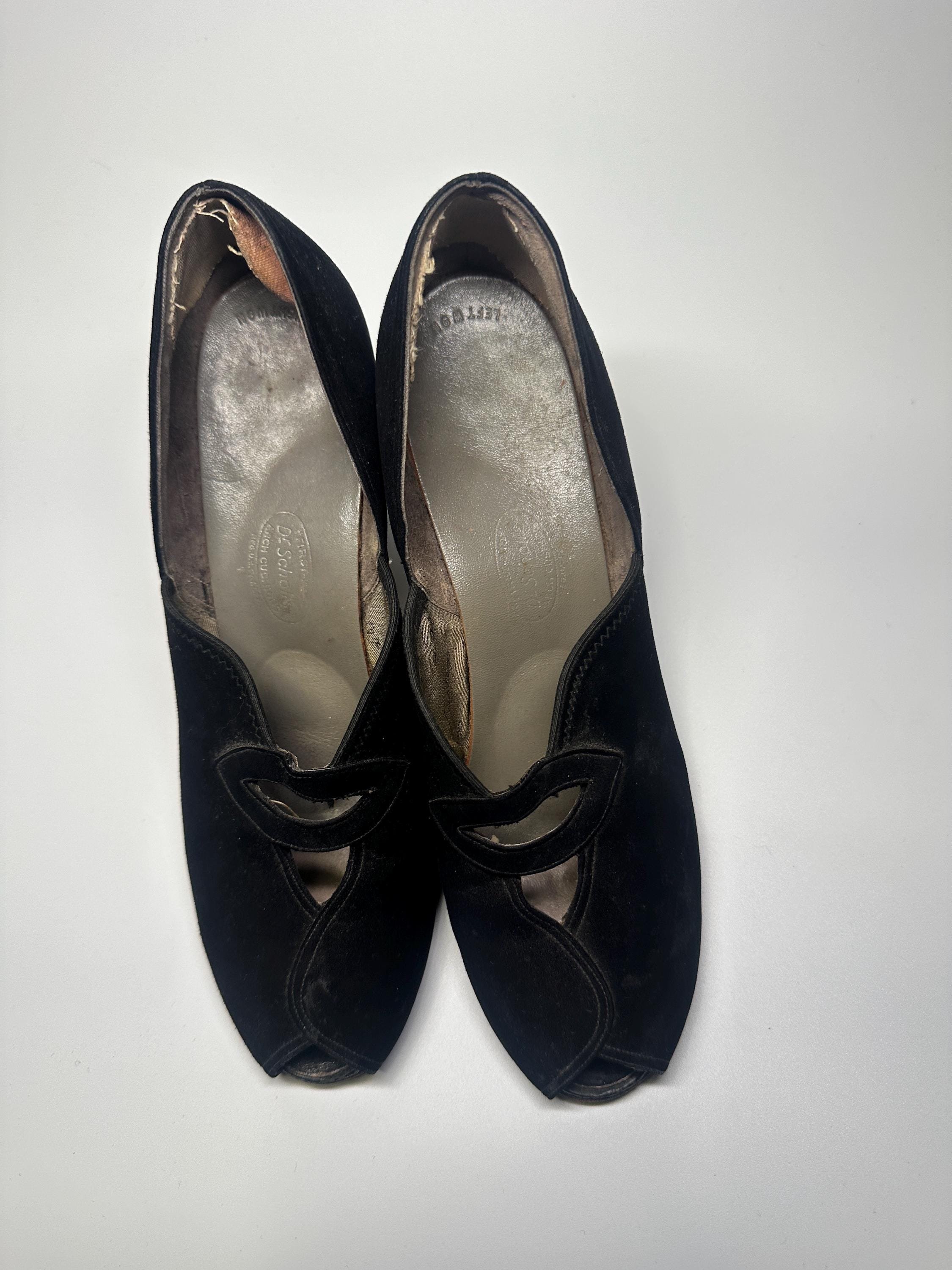 Image 5 of 8
Image 5 of 8

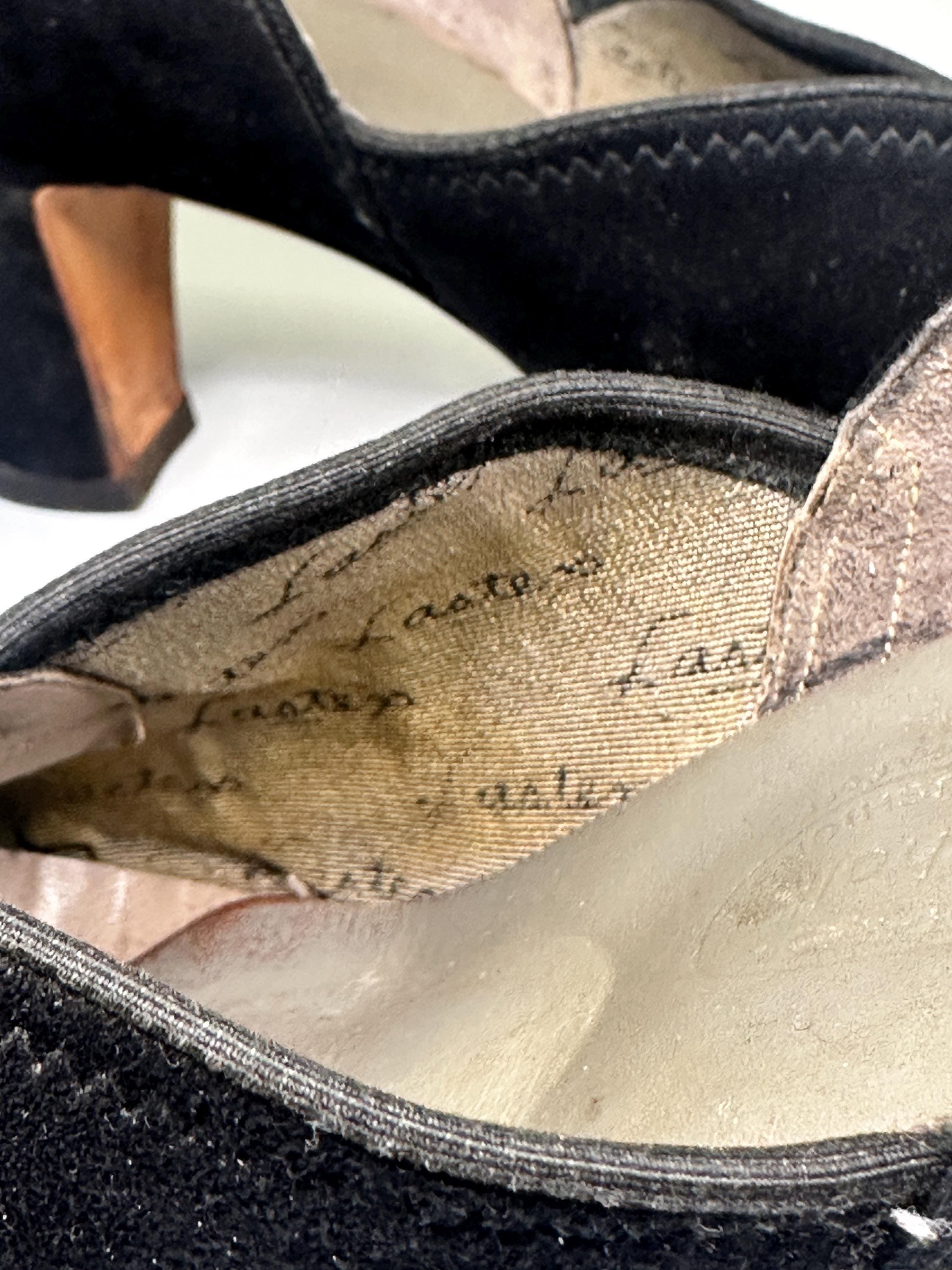 Image 6 of 8
Image 6 of 8

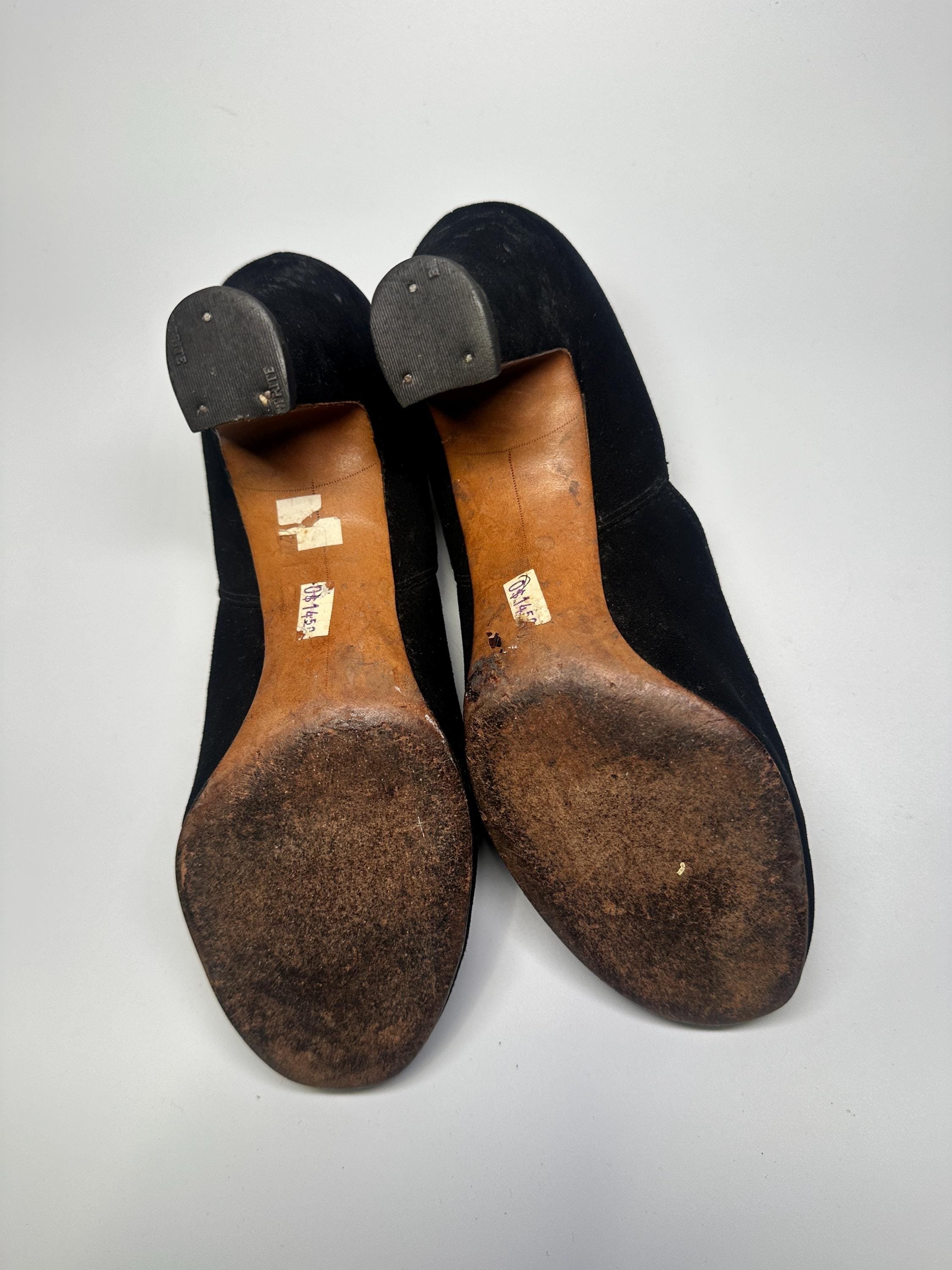 Image 7 of 8
Image 7 of 8

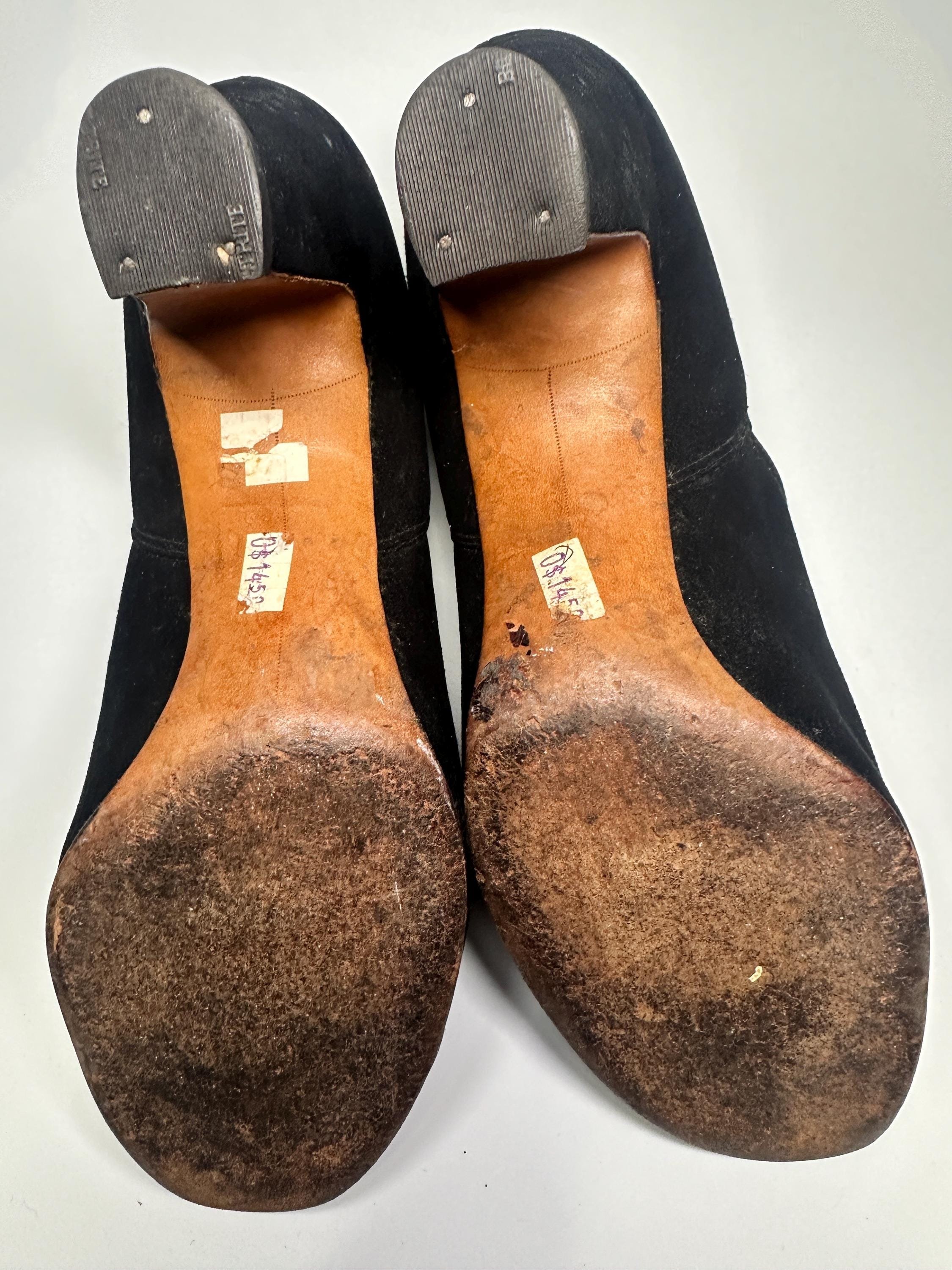 Image 8 of 8
Image 8 of 8









Lastex 1940s Flapper Girl Shoes Size 7 Vintage Suade
$250.00
Lastex shoes of the 1940s were innovative footwear that utilized a special elastic fabric known as Lastex, a trademarked material made from rubber threads wrapped in cotton, silk, or rayon. This material was popular in the 1930s and 1940s, especially in clothing and shoes, because it provided stretch, comfort, and a snug fit.
Key Features of 1940s Lastex Shoes:
1. Stretchy Uppers:
• The use of Lastex allowed the uppers of the shoes to stretch and conform to the wearer’s feet, providing a secure and flexible fit.
• This was particularly useful during wartime when conserving materials like leather was important.
2. Versatility:
• Lastex shoes came in various styles, including pumps, wedges, and casual sandals. The stretchy material was often paired with leather or other materials for structural support.
• They were practical and adaptable, suitable for both casual and semi-formal occasions.
3. Wartime Influence:
• During World War II, rationing impacted shoe production, and materials like Lastex became a resourceful alternative to leather and other traditional fabrics.
• These shoes embodied the era’s focus on functionality and resourcefulness without sacrificing style.
4. Design Details:
• Many Lastex shoes featured peep toes, slingback straps, or wedge heels, reflecting the popular styles of the 1940s.
• Some incorporated decorative elements like bows, cutouts, or contrasting stitching.
5. Comfort and Utility:
• The stretchy nature of Lastex made the shoes comfortable for prolonged wear, appealing to women balancing work and home responsibilities during the war years.
Lastex shoes were a product of their time, combining innovation, style, and practicality to meet the needs of women during a resource-constrained era. Today, they are admired as a fascinating example of vintage ingenuity and design.
Key Features of 1940s Lastex Shoes:
1. Stretchy Uppers:
• The use of Lastex allowed the uppers of the shoes to stretch and conform to the wearer’s feet, providing a secure and flexible fit.
• This was particularly useful during wartime when conserving materials like leather was important.
2. Versatility:
• Lastex shoes came in various styles, including pumps, wedges, and casual sandals. The stretchy material was often paired with leather or other materials for structural support.
• They were practical and adaptable, suitable for both casual and semi-formal occasions.
3. Wartime Influence:
• During World War II, rationing impacted shoe production, and materials like Lastex became a resourceful alternative to leather and other traditional fabrics.
• These shoes embodied the era’s focus on functionality and resourcefulness without sacrificing style.
4. Design Details:
• Many Lastex shoes featured peep toes, slingback straps, or wedge heels, reflecting the popular styles of the 1940s.
• Some incorporated decorative elements like bows, cutouts, or contrasting stitching.
5. Comfort and Utility:
• The stretchy nature of Lastex made the shoes comfortable for prolonged wear, appealing to women balancing work and home responsibilities during the war years.
Lastex shoes were a product of their time, combining innovation, style, and practicality to meet the needs of women during a resource-constrained era. Today, they are admired as a fascinating example of vintage ingenuity and design.
Lastex shoes of the 1940s were innovative footwear that utilized a special elastic fabric known as Lastex, a trademarked material made from rubber threads wrapped in cotton, silk, or rayon. This material was popular in the 1930s and 1940s, especially in clothing and shoes, because it provided stretch, comfort, and a snug fit.
Key Features of 1940s Lastex Shoes:
1. Stretchy Uppers:
• The use of Lastex allowed the uppers of the shoes to stretch and conform to the wearer’s feet, providing a secure and flexible fit.
• This was particularly useful during wartime when conserving materials like leather was important.
2. Versatility:
• Lastex shoes came in various styles, including pumps, wedges, and casual sandals. The stretchy material was often paired with leather or other materials for structural support.
• They were practical and adaptable, suitable for both casual and semi-formal occasions.
3. Wartime Influence:
• During World War II, rationing impacted shoe production, and materials like Lastex became a resourceful alternative to leather and other traditional fabrics.
• These shoes embodied the era’s focus on functionality and resourcefulness without sacrificing style.
4. Design Details:
• Many Lastex shoes featured peep toes, slingback straps, or wedge heels, reflecting the popular styles of the 1940s.
• Some incorporated decorative elements like bows, cutouts, or contrasting stitching.
5. Comfort and Utility:
• The stretchy nature of Lastex made the shoes comfortable for prolonged wear, appealing to women balancing work and home responsibilities during the war years.
Lastex shoes were a product of their time, combining innovation, style, and practicality to meet the needs of women during a resource-constrained era. Today, they are admired as a fascinating example of vintage ingenuity and design.
Key Features of 1940s Lastex Shoes:
1. Stretchy Uppers:
• The use of Lastex allowed the uppers of the shoes to stretch and conform to the wearer’s feet, providing a secure and flexible fit.
• This was particularly useful during wartime when conserving materials like leather was important.
2. Versatility:
• Lastex shoes came in various styles, including pumps, wedges, and casual sandals. The stretchy material was often paired with leather or other materials for structural support.
• They were practical and adaptable, suitable for both casual and semi-formal occasions.
3. Wartime Influence:
• During World War II, rationing impacted shoe production, and materials like Lastex became a resourceful alternative to leather and other traditional fabrics.
• These shoes embodied the era’s focus on functionality and resourcefulness without sacrificing style.
4. Design Details:
• Many Lastex shoes featured peep toes, slingback straps, or wedge heels, reflecting the popular styles of the 1940s.
• Some incorporated decorative elements like bows, cutouts, or contrasting stitching.
5. Comfort and Utility:
• The stretchy nature of Lastex made the shoes comfortable for prolonged wear, appealing to women balancing work and home responsibilities during the war years.
Lastex shoes were a product of their time, combining innovation, style, and practicality to meet the needs of women during a resource-constrained era. Today, they are admired as a fascinating example of vintage ingenuity and design.
